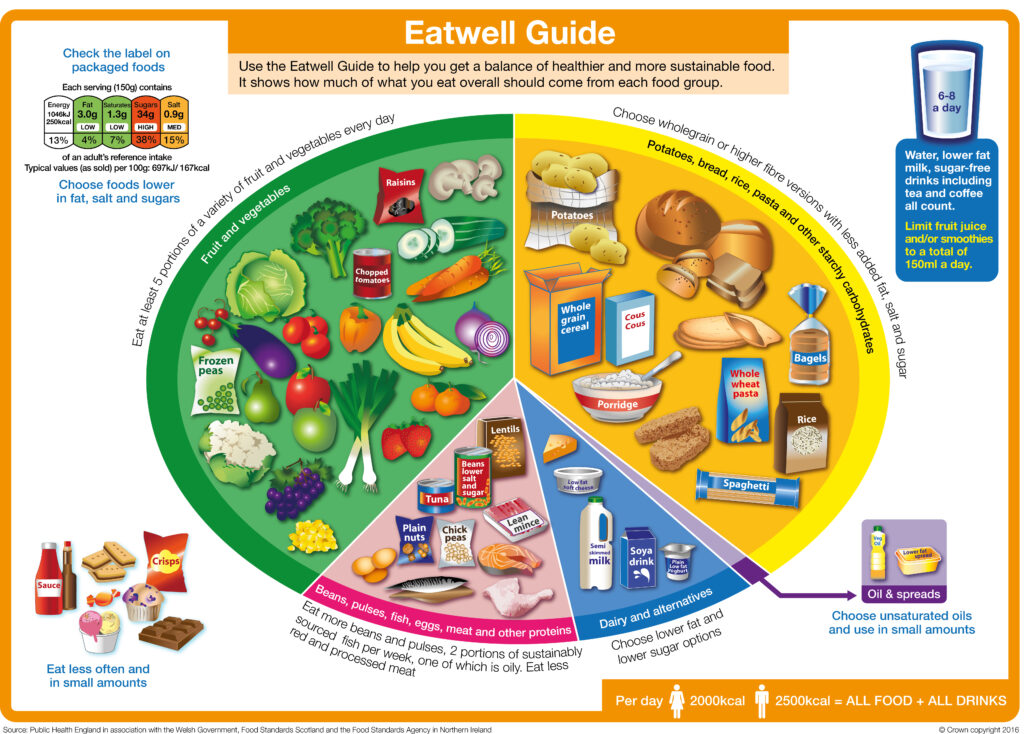 Authors Bio
Authors Bio
Juliette Kellow is a highly experienced nutrition consultant with over 20 years of expertise working with food-focused clients. Originally from Cornwall, she holds a first-class BSc Honours Degree in Dietetics from Leeds Polytechnic (now Leeds Beckett University).
Her career spans roles as an NHS dietitian, food industry nutritionist, and editor of Top Santé magazine. Juliette has collaborated with the food industry on reformulation, NPD, fortification, nutrition legislation, and professional presentations.
As a published author of books such as Eat Better Live Longer and Simply Nutrition (DK Books) and with hundreds of articles to her name, Juliette specialises in making nutrition accessible. A member of the British Dietetic Association and registered with the HCPC, her work is both credible and evidence-based.
Supporting student success: Creating menus to promote healthy eating in schools
With the school year well underway, it’s the perfect time to reflect on how school meals can help students succeed in the classroom. Registered dietitian Juliette Kellow shares her lessons in good nutrition to support learning and wellbeing…
Providing students with healthy, nutritious meals and snacks at school plays a vital role in helping children get all the energy, nutrients and fluid they need for a healthy body and brain.
Research shows a well-balanced, healthy diet helps children perform better academically. Good nutrition supports brain function, aids concentration, and boosts energy levels, so students are more likely to fully engage in lessons, sports and extracurricular activities. Healthier eating habits are also linked to better sleep – a significant point as a lack of sleep can negatively impact mood, attention and memory, and even contribute to school absence.
School food provision is even more significant given that many children fail to meet healthy eating guidelines. The National Diet and Nutrition Survey confirms schoolchildren typically exceed daily recommendations for saturated fat, sugar, and salt, while falling short on fruit, vegetables, and fibre. At the same time, many fail to meet essential nutritional needs. For example, significant numbers of 11- to 18-year-olds have very low intakes of vitamin A, vitamin B2, iron, calcium, magnesium, potassium, iodine, selenium and zinc.
As children consume a significant portion of their daily food intake at school, caterers and suppliers have a crucial opportunity to make a positive impact on students’ wellbeing by designing menus that are both delicious and nutritionally balanced. In short, school food providers can help students meet their nutrient needs, so they are more likely to thrive both inside and outside the classroom.
Promoting healthy eating at school
To help children eat well at school, England, Scotland, Wales and Northern Ireland each have their own set of standards outlining food and drink provision in schools. While specific details vary, the principles underpinning all these standards are based on the Eatwell Guide. For school food caterers and suppliers, a clear understanding of this healthy eating model is therefore a key starting point for promoting and delivering balanced, nutritious meals to students.
Understanding the Eatwell Guide
The Eatwell Guide translates healthy eating advice into a visual representation of the types and proportions of foods that should be eaten to achieve a healthy, balanced and sustainable diet. It applies to children aged five and older (between the ages of two and five years, children should gradually move towards the recommendations). The Eatwell Guide consists of five food groups and provides guidance on foods to consume in smaller amounts and hydration.
Here are the key points…
Potatoes, Bread, Rice, Pasta and Other Starchy Carbohydrates
This food group should make up around a third of the food eaten and includes noodles, couscous, oats, bulgur wheat, breakfast cereals, yams and plantain. These foods provide energy – carbohydrates are broken down into glucose, which fuels every cell in the body and brain. This is particularly important for children as low energy levels can quickly cause tiredness, affecting behaviour, mood and the ability to learn.
The focus should be on providing higher-fibre versions of starchy carbohydrates, as these release energy slowly, keep children fuller for longer, and support digestive health. This latter point is important as constipation affects up to a fifth of children in the UK.
Wholegrain products – which contain all parts of the grain – are particularly good choices as they provide fibre and are usually richer in vitamins and minerals than refined grains. For example, wholewheat spaghetti contains more than double the fibre, magnesium, iron, zinc, manganese and selenium of white spaghetti.
Examples of fibre-containing starchy carbohydrates include wholemeal and grainy breads, wholewheat pasta, noodles and couscous, brown rice, wholegrain cereals, oats, wholemeal flour, and potatoes and yams in their skins.
It’s also best to provide starchy foods with less added fat, salt and sugar, and to limit serving them with foods high in these ingredients.
Fruit and vegetables
This food group includes all fresh, frozen, canned and dried fruit and veg. The World Health Organization recommends eating at least 400g of fruit and vegetables a day. In the UK, this is translated into 5-a-day – at least five different portions of fruit and veg daily, where one portion equals 80g (or 30g for dried fruit). Potatoes, yams and plantain don’t count towards fruit and veg targets as they belong with starchy carbohydrates. Fruit juices and smoothies are included but should be limited to 150ml a day and only counted as one of 5-a-day as their natural sugars are potentially harmful to teeth. Beans, chickpeas and lentils also count, but only as one portion regardless of the amount eaten as they contain different nutrients to fruit and veg.
Fruit and vegetables are essential sources of fibre, vitamins, and minerals. Key nutrients include:
• Vitamin C – found in most fruit and veg, especially citrus fruits, peppers, leafy greens, berries and kiwi fruit. This nutrient supports immune function, reduces tiredness, aids psychological wellbeing and helps the body absorb iron from plant foods – a key benefit for students following vegetarian or vegan diets.
• Folate – found in green leafy veg, peas, red peppers, and strawberries. This nutrient combats fatigue and keeps the immune system working well.
• Beta-carotene – found in orange fleshed fruit and veg such as carrots, butternut squash, and mango. This is converted into vitamin A, which supports the immune system and is important for vision and skin.
• Potassium – many fruits and vegetables supply this nutrient, which helps muscles to work normally.
Despite the benefits of eating fruit and veg, the National Diet and Nutrition Survey reveals just 12% of 11- to 18-year-olds achieve 5-a-day. Average intakes are three portions daily4. School menus that feature a variety of fruit and veg can help to close this gap.
Dairy and Alternatives
This food group includes milk, cheese, yoghurt, fromage frais and dairy alternatives such as soya drinks or yoghurts.
Dairy products are rich in many nutrients including protein, calcium and phosphorus, which help to build strong bones. Adolescence is a critical time for bone health. During this stage in life, large amounts of calcium are deposited in bones to support their rapid growth. By the late teens, about 90% of bone strength and density is already established. Bones then continue to strengthen until the late 20s, when they reach their maximum strength and density, after which time, they gradually lose mass. Providing plenty of calcium-rich foods on school menus can therefore have a crucial role in helping to ensure bones are as strong as possible at their peak.
Dairy products also provide vitamins B2 and B12, which combat fatigue and help the nervous system work properly. They’re a key source of iodine, too, which supports cognitive function such as thinking, learning, memory, and problem solving. However, almost a quarter of 11 to 18 years have very low iodine intakes so may be at an increased risk of a deficiency4.
Low fat and low sugar options are best, and dairy alternatives should be unsweetened and fortified with calcium, vitamin B12 and ideally iodine.
Beans, Pulses, Fish, Eggs, Meat and Other Proteins
This food group also includes chickpeas, lentils, nuts, seeds, soya and mycoprotein. These foods are key sources of protein, which supports growth and builds and maintains muscle. Many foods also supply iron and zinc, which aid cognitive function.
Healthy eating advice recommends two portions of sustainably sourced fish a week, including one portion of oily fish such as salmon, mackerel or sardines. These are rich in an omega-3 fat called DHA, which supports brain function. Oily fish, together with eggs, are also one of the few natural sources of vitamin D. This nutrient helps the body absorb calcium and phosphorus, so has an important role in supporting bone growth and development in children. White fish is also an important source of iodine.
Meat should be lean and it’s best to limit processed meats such as sausages, bacon, ham, salami and chorizo as they can be high in salt and large amounts have been linked to an increased risk of bowel cancer.
Plant-based options such as beans, lentils, chickpeas, and seeds also provide fibre, which helps to keep children fuller for longer and supports digestive health.
Oils and Spreads
This small food group includes healthier fats such as vegetable, rapeseed, olive and sunflower oils and spreads, which should be chosen over animal fats such as butter, ghee, lard, palm or coconut oil, which are high in saturated fats.
Fats are important as they help the body to absorb fat-soluble vitamins (A, D and E), and provide essential fats the body can’t make on its own. However, as all fats are high in energy (calories) they should be used sparingly in school meals.
Fatty, Sugary and Salty Foods
Foods that are high in fat, sugar and o/or salt – such as biscuits, cakes, crisps, sweets, chocolate, ice cream and sauces – aren’t considered an essential part of a healthy diet so should be eaten less often and in small amounts. School food standards for each country provide further information on the provision of these foods.
The importance of hydration
Staying hydrated is crucial for helping students stay focused and energised throughout the school day. Inadequate fluid intakes can lead to fatigue, headaches, and low energy levels, and can hinder brain functions like concentration, memory, and attention – ultimately affecting the ability to learn and engage in lessons.
Students typically need 1.5 to 2 litres of fluids daily, roughly six to eight drinks. However, needs may be much higher than this, especially on hot days or if students are active in PE or sports lessons or at break times. Water is the benchmark, but school food standards allow other healthy drinks, too, such as reduced-fat milk. The key is to ensure water and other permitted drinks are readily available during the day to hydration.
Lessons in good nutrition and hydration
It’s clear that providing balanced, nutritious meals and encouraging hydration are vital for supporting students’ health, wellbeing, and academic success. By offering appealing dishes centred around fibre-rich starchy foods, fruit, vegetables, dairy (or alternatives), and protein-rich foods – and ensuring water is readily accessible – school caterers can play a critical role in promoting good nutrition and helping students thrive at school.
References
1.Chikwere, P. Diet, a factor for academic performance in school-aged children: systematic review of recent studies. All Nations University Journal of Applied Thought. 2019, 7 (1), Article 6.
2.Zhao Y, et al. Eating habits matter for sleep difficulties in children and adolescents: A cross-sectional study. Front Pediatr. 2023,12;11:1108031. doi: 10.3389/fped.2023.1108031.
3.Hysing M, et al. Sleep and school attendance in adolescence: Results from a large population-based study. Scandinavian Journal of Public Health. 2015;43(1):2-9. doi:10.1177/1403494814556647
4.GovUK. NDNS: results from years 9 to 11 (2016 to 2017 and 2018 to 2019). 11 December 2020.
5.Gov.UK (2023) School food standards practical guide. 19 September 2024.
6.Scottish Government (2021) Heathy eating in schools: guidance 2020. February 2021.
7.Welsh Government (2014) Healthy eating in maintained schools. June 2014.
8.Department of Education. Nutritional standards guidance. 1 September 2011.
9.Gov.UK. The Eatwell Guide.
10. NICE. Constipation in children: How common is it? January 2024.
11.NHS. Why 5-a-day? 12 July 2022.
12. Benjamin RM. Bone health: preventing osteoporosis. Public Health Rep. 2010;125(3):368-70. doi: 10.1177/003335491012500302.
13. NHS. Meat in your diet. 1 May 2024.


